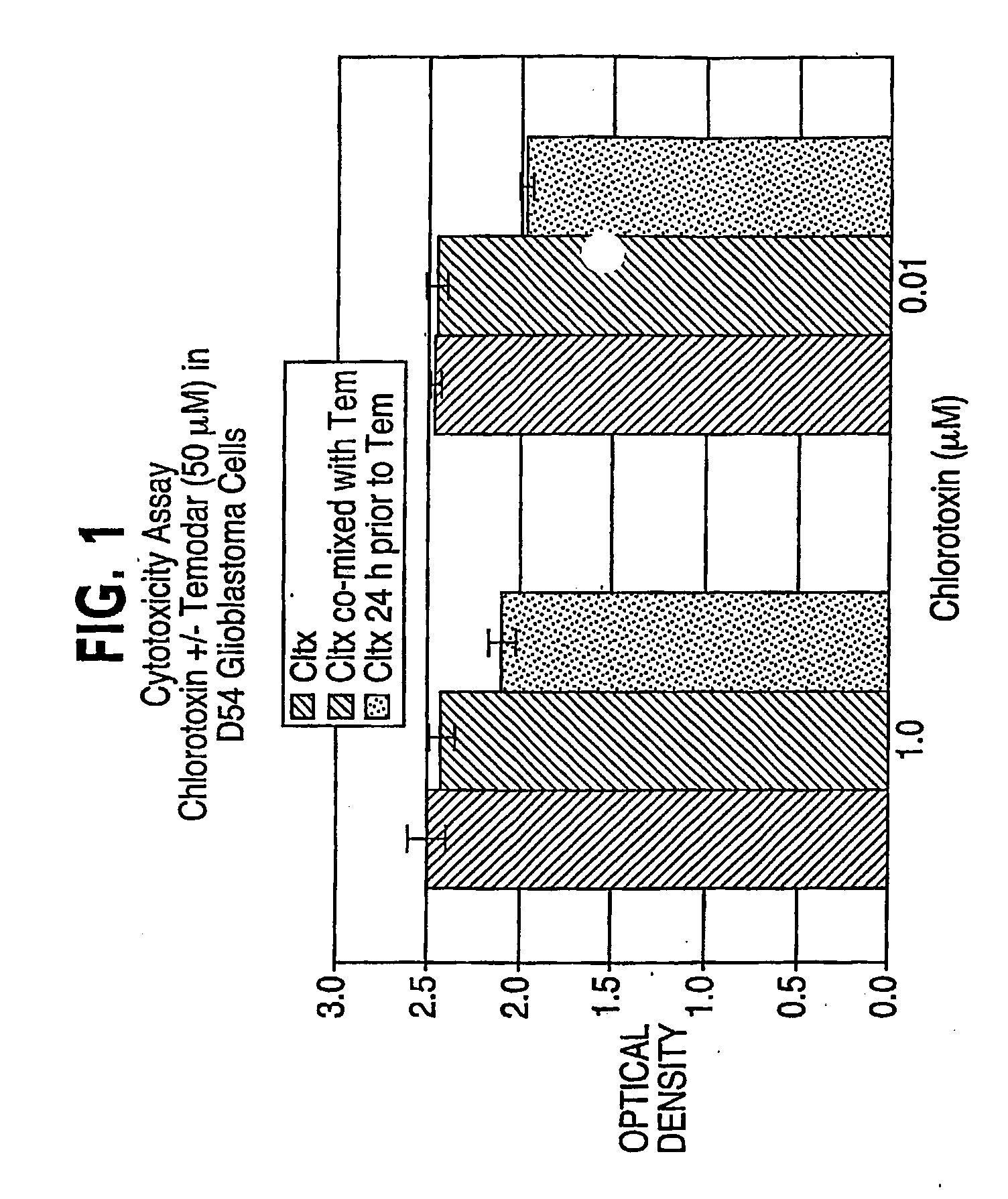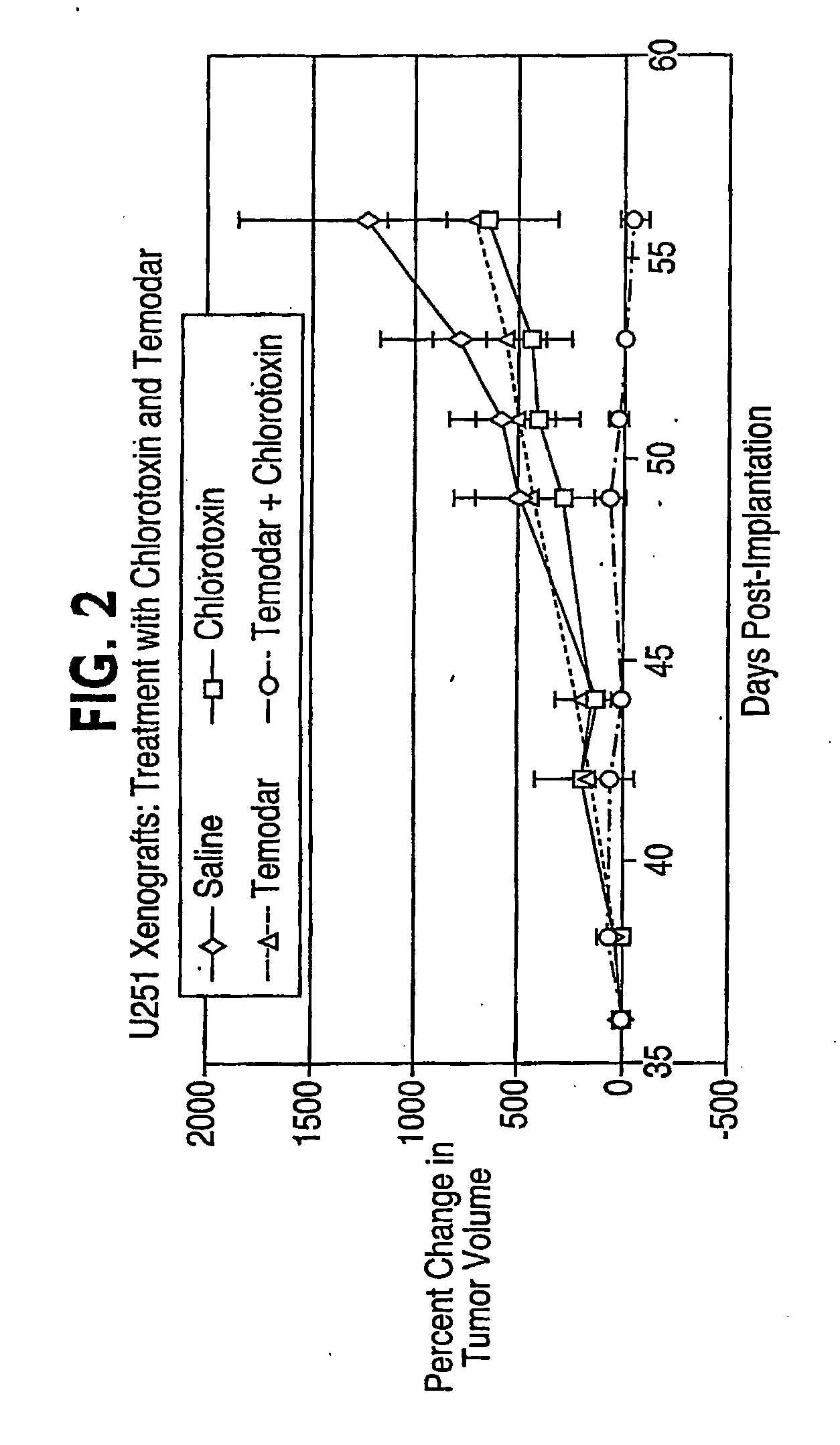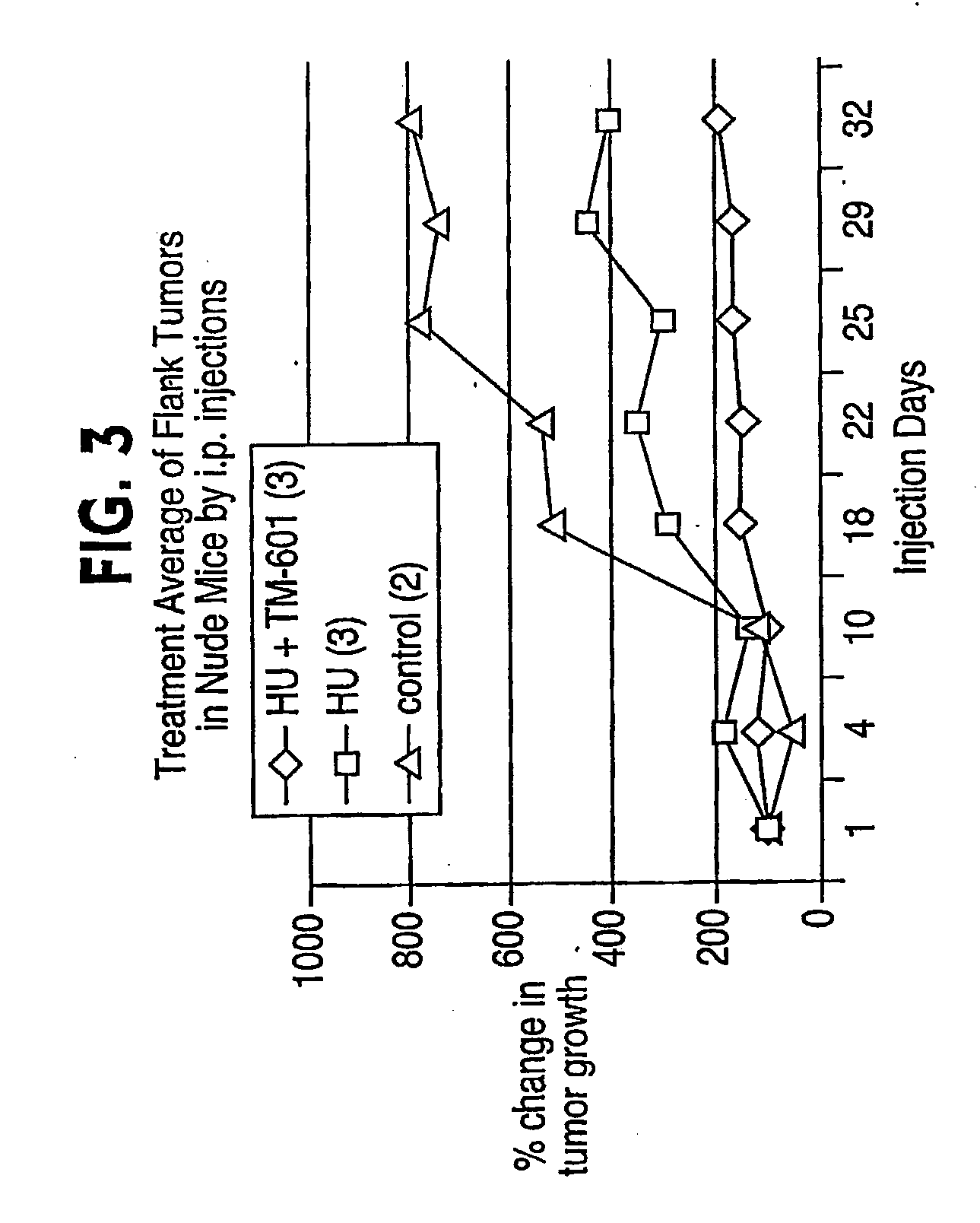Combination chemotherapy with chlorotoxin
a technology of chlorotoxin and chemotherapy, applied in the field of cell physiology and oncology, can solve the problems of difficult reach of the pineal region, malignant, and general inability to remove tumors in this area
- Summary
- Abstract
- Description
- Claims
- Application Information
AI Technical Summary
Benefits of technology
Problems solved by technology
Method used
Image
Examples
example 1
Determination of Chemotherapeutic Agent Activity In Vitro
[0089] A tissue culture method was optimized to test the effects of various chemotherapeutic agents on multiple cancer cell lines (see Table 1). Cells were plated on 96-well microtiter tissue culture plates at a density of approximately 1000-2000 cells per well, depending on the specific cell line. Cells were allowed to adhere twenty-four hours in a 37° C., humidified cell culture incubator supplied with five percent carbon dioxide. In order to achieve a dose-response curve for each drug in each cell line, cells were treated with decreasing concentrations of a specific cytotoxic compound for two to five days. Following treatment, the cytotoxic effect of the drug was quantified using the Cell Counting Kit-8 (CCK-8) (Dojindo Inc.) according to the manufacturer's instructions. In brief, following the treatment period with the cytotoxic drug, cells were incubated with CCK-8 reagent and incubated at 37° C. for one to four hours, ...
example 2
Effect of Chlorotoxin on Chemotherapeutic Agent Activity In Vitro
[0091] For measurement of pharmacologic effect of chlorotoxin on chemotherapeutic agents, the cell culture methodology in Example 1 was employed with the following modifications: a concentration of the chemotherapeutic agent approaching the IC50 but usually just below was used in each assay. Various amounts of chlorotoxin were then titrated in combination with a concentration of chemotherapeutic agent near or below its IC50 and the effect of chlorotoxin on the cytotoxic effects of the chemotherapeutic agent measured two to three days following administration. Concentration of chlorotoxin employed in this assay ranged from micoromolar down to nanomolar concentrations.
[0092] The effect of adding chlorotoxin in combination with Temodar on D54-MG cell proliferation is shown in FIG. 1. The level of Temodar used in this experiment (0.050 mM) is about thirty-fold lower than the concentration necessary to kill these cells a...
example 3
Effect of Chlorotoxin on Chemotherapeutic Agent Activity In Vivo
[0093] The purpose of this study was to determine whether hydroxyurea or temodar combined with chlorotoxin were sufficient to inhibit tumor growth as indicated from in vitro studies with glioma cell lines. Other studies indicated that chlorotoxin, pre-incubated with human cancer cell lines, greatly sensitized the cells to temodar, a chemotherapeutic, tumor cell killing agent. Combination treatment with chlorotoxin with hydroxyurea or temodar in mice with glioma flank tumors was compared to the treatment group of hydroxyurea or temodar alone and saline alone. Hydroxyurea and temodar dosage was based on the lowest dosage (10 mg / kg body weight) used in previous studies to determine clearance from the body in the treatment of sickle cell disease paradigm in nude mice (Iyamu et al. (2001) Chemotherapy 47, 270-278).
[0094] Nude mice were ear-tagged and given an identification number were inoculated with five million U251 gl...
PUM
| Property | Measurement | Unit |
|---|---|---|
| Electrical conductance | aaaaa | aaaaa |
| Capacitance | aaaaa | aaaaa |
| Dynamic viscosity | aaaaa | aaaaa |
Abstract
Description
Claims
Application Information
 Login to View More
Login to View More - R&D
- Intellectual Property
- Life Sciences
- Materials
- Tech Scout
- Unparalleled Data Quality
- Higher Quality Content
- 60% Fewer Hallucinations
Browse by: Latest US Patents, China's latest patents, Technical Efficacy Thesaurus, Application Domain, Technology Topic, Popular Technical Reports.
© 2025 PatSnap. All rights reserved.Legal|Privacy policy|Modern Slavery Act Transparency Statement|Sitemap|About US| Contact US: help@patsnap.com



